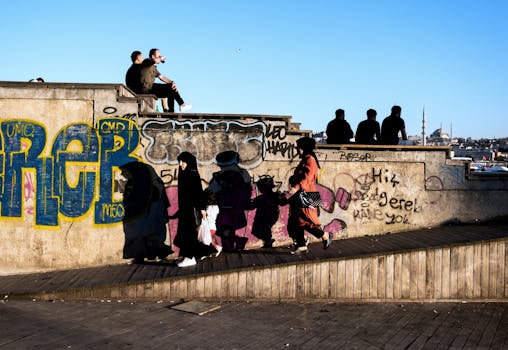
Cultural Fusion: Embracing Diversity in European Lifestyles by 2025
Cultural Fusion, European Lifestyles, Diversity, 2025: As we approach the year 2025, it’s clear that cultural fusion is becoming an increasingly important aspect of European lifestyles. With the rise of globalization and immigration, European cities are becoming more diverse than ever before. In this article, we’ll explore the concept of cultural fusion and how it’s shaping European lifestyles, as well as what this means for the future of diversity and inclusion in Europe.
What is Cultural Fusion?
Cultural fusion refers to the blending of different cultural practices, traditions, and values to create a new and unique cultural identity. This can occur through various means, such as immigration, globalization, and technological advancements. In Europe, cultural fusion is happening at a rapid pace, with people from different cultural backgrounds coming together to share their customs, languages, and traditions.
Examples of Cultural Fusion in Europe
There are many examples of cultural fusion in Europe, from the Indian restaurants in London’s Brick Lane to the African markets in Paris’s Château-Rouge neighborhood. In Amsterdam, you can find a mix of Dutch, Indonesian, and Surinamese cultures, reflected in the city’s cuisine, music, and art. These examples demonstrate how cultural fusion is enriching European lifestyles and creating a more diverse and vibrant cultural landscape.
The Benefits of Cultural Fusion
Cultural fusion has numerous benefits, including the promotion of diversity, inclusion, and creativity. When people from different cultural backgrounds come together, they bring with them new ideas, perspectives, and innovations. This can lead to the creation of new products, services, and artistic expressions that are unique and valuable. Additionally, cultural fusion can help to break down cultural barriers and promote greater understanding and empathy between different communities.
Challenges and Opportunities
While cultural fusion offers many benefits, it also presents challenges and opportunities. One of the main challenges is the potential for cultural homogenization, where one culture dominates others and leads to the loss of cultural diversity. However, this can also be seen as an opportunity for cultures to learn from each other and adapt to new circumstances. Another challenge is the need for greater cultural awareness and understanding, which can be addressed through education, dialogue, and community engagement.
Conclusion
In conclusion, cultural fusion is a powerful force that is shaping European lifestyles by 2025. As we move forward, it’s essential to recognize the benefits and challenges of cultural fusion and work towards creating a more inclusive and diverse cultural landscape. By embracing cultural fusion, we can promote greater understanding, creativity, and innovation, and create a brighter future for all Europeans.




